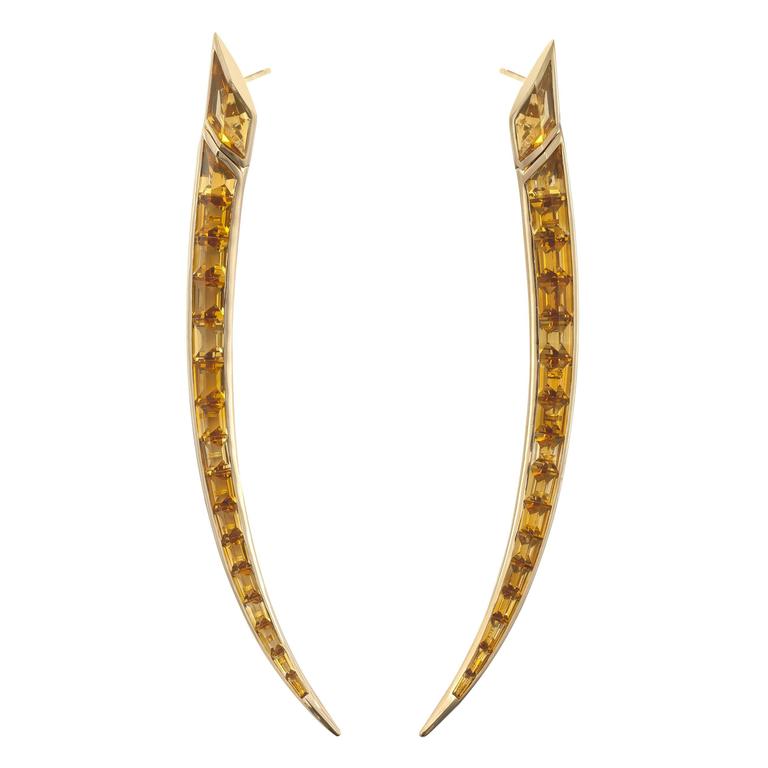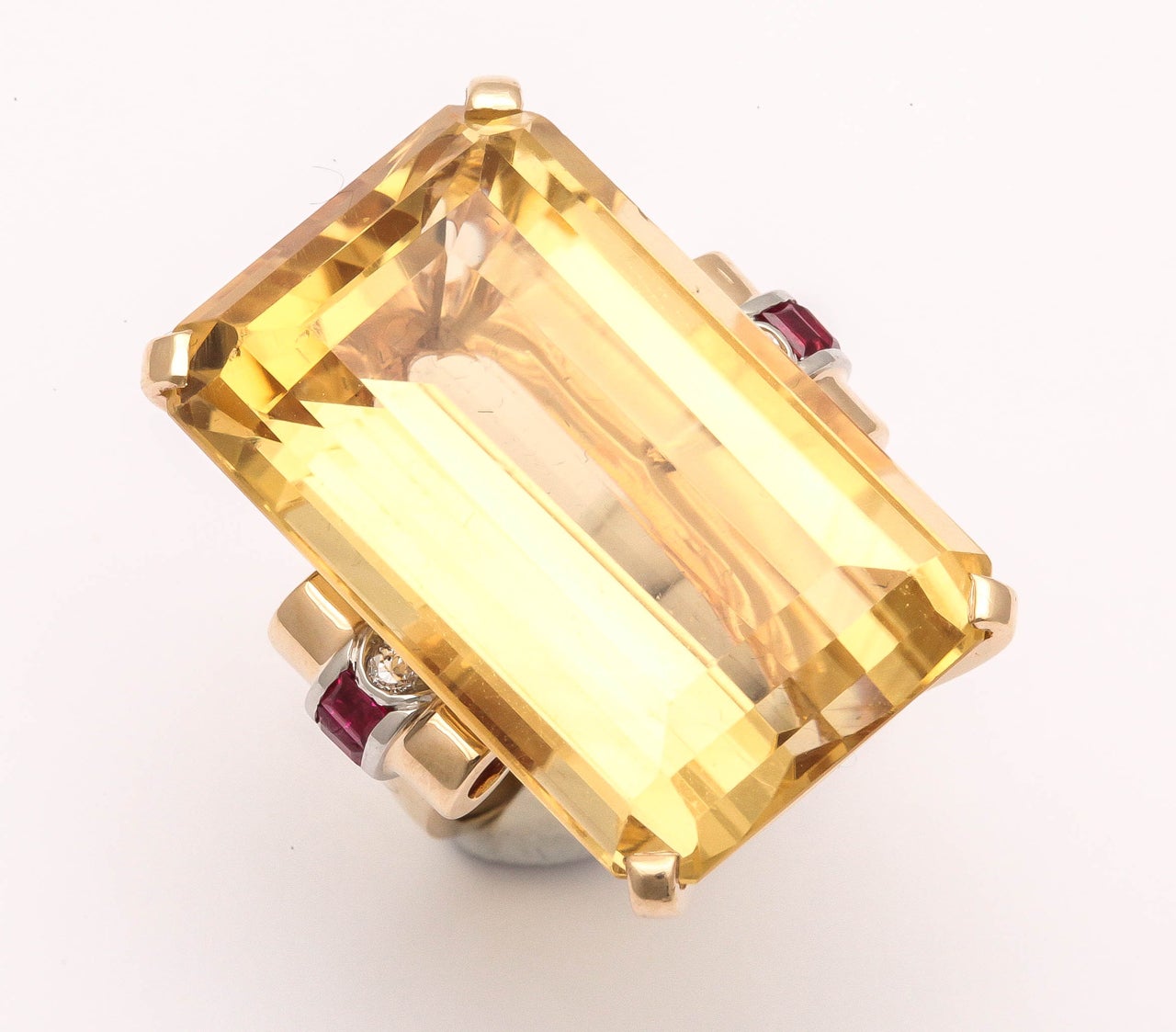Saturday, 31 October 2015
Birthstones - November - Golden Topaz and Citrine
Golden topaz and citrine are considered traditional birthstones for November. Both have a rich history through many cultures, although there is some historical confusion over which gemstone was actually being referred to by which name. While the stones share a rich, warm, yellow colouring, they are completely different materials. Citrine is quartz coloured yellow by iron, topaz is a silicate mineral.
Names of gemstones have changed a lot over the centuries, and an historical lack of chemical knowledge means many stones have been known by different names, and some names have been lost completely over time. The writer C. W. King, considered one of the nineteenth century's most knowledgable men on jewellery, describes 'German Amethysts and Topaz's' as 'purple and yellow crystals of quartz.' (I don't believe he was confusing the two, I believe he was trying to clarify common terminology.)
This confusion over names is probably what lead to both gemstones being accepted as November's birthstone. The beautiful, warm hue of the stones would be a welcome gift in the Northern Hemisphere's winter, symbolising friendship, positivity, and the coming summer sun. The above stunning golden topaz suite, available from sjphillips.com, is a perfect illustration of this.
The name Topaz originates with Pliny the Elder, when he wrote about an island called Topazios and the gemstones mined there, although he is now thought to have been referring to what we now call Peridots. A gem this ancient and beautiful has of course acquired many traditions and superstitions, most of them regarding its talismanic qualities. A topaz carved with a falcon and worn as a ring, according to George Frederick Kunz, will allow the wearer to 'acquire the good-will of kings, princes, and magnates.'
From the same book on the 'Curious lore of precious stones' there are references to topaz's assisting 'the ardent contemplation of the prophesies'. In another book by the same author, we are told that topaz has the ability to quench thirst.
The name citrine has only been reliably used to describe yellow quartz since about 1900. Before then it may have been known by the French 'citron', or as Burnt or Smoky Topaz.
Citrine from Scotland is named Cairngorm, after the mountains in which it is found. Scottish jewellery became very popular in the Victorian period, helped by Queen Victoria's love of what is often called 'pebble jewellery', large striking compositions of agate, amethyst, and Cairngorms. Very unusually for the time, Cairngorms are often set in silver. Traditional colour theories teach that this colour combination of cool white metal and warm transparent gemstone was not appealing, however, this almost uniquely Scottish pairing proves them wrong. I found this very dramatic example (now sold) at Lang Antiques.
These days, citrine is easily found in jewellery quality stones up to 20cts, making it perfect for large statement pieces such as pendants and cocktail rings. It is also very durable as it has no cleavage plane, so will take a knock better than Topaz will. Of course always be careful with your precious jewellery, nothing is invincible.
The differences between Topaz and Citrine to keep in mind when buying jewellery are that Topaz is harder, and has more 'fire' than Citrine. It also has 'perfect cleavage' which is more relevant to jewellers than wearers, but means if hit at the right angle, the stone can (very rarely) split. Citrine has no cleavage planes, and is softer, so although it will scratch more easily, it is far less likely to break. Good gemcutters and jewellers will create pieces that take these factors into account.
A pair of 11ct Citrine and 18ct gold Sabre earrings by UK jeweller Shaun Leane. This pair available from their 1stdibs store here.
Shaun Leane creates elegant and striking pieces with long dramatic sweeping lines. In this case the bright welcoming yellow is contrasted by the clean narrow minimalist sweep of the earrings.
A classic example of an oversized 1940s cocktail ring, featuring a massive central citrine set with rubies and small diamonds in 14ct rose gold. The warm tones of each of the elements complement each other, while the long lines of the step cut citrine keep the overall impression clean and simple. I particularly like the care taken to surround the rubies with white gold and a diamond, isolating the stronger red from the softer rose gold, thus enhancing both. Available here from The Emporium Ltd at 1stdibs.
This and the below image are examples of how similarly citrines and golden topaz's were used in Europe until the 20th century. Above is an oval citrine, below is a topaz, both set in yellow gold.
Both are part of the V&A museum's jewellery collection, found here.
The gold of the citrine brooch is worked in repousse and chasing, - hammering and engraving techniques used on flat sheets of metal to raise or lower a design. The gold of the topaz brooch has been worked in filigree, using wires and small beads to build up a design resembling lacework.
Either of these brooches would have added warmth and sparkle to cold European November birthday celebrations.
Labels:
1940s,
1stdibs,
birthstone,
brooch,
Cairngorm,
citrine,
earrings,
history,
Lang Antiques,
November,
pebble,
Scotland,
Shaun Leane,
silver,
sjphillips,
superstition,
The Emporium,
topaz,
V&A
Subscribe to:
Post Comments (Atom)
©
Riches of nature and art | All rights reserved.



No comments
Post a Comment